SHTFDad may collect a share of sales or other compensation from the links on this page.
They’re sneaky, and strike without warning, causing millions of dollars in damage and leaving families without much to look forward to.
They rumble, tumble, blow, and shake any and everything that stands in their way. In some cases, they’ll even blaze and freeze individuals who are brave enough to step in their way. They have no emotions, and shouldn’t be taken lightly by residents.
“What is it that has this ability?” you ask. The answer is simple, they’re called natural disasters.
Before you decide to head to the hardware store to gather supplies, here are some ways you can be prepared for 4 of the most common types of natural disasters.
Types Of Natural Disasters
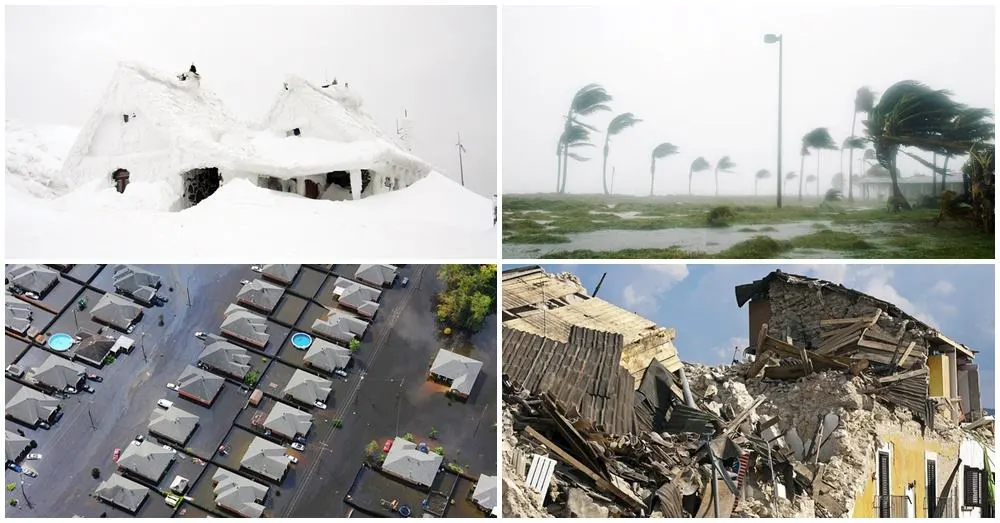
1. Snowstorms
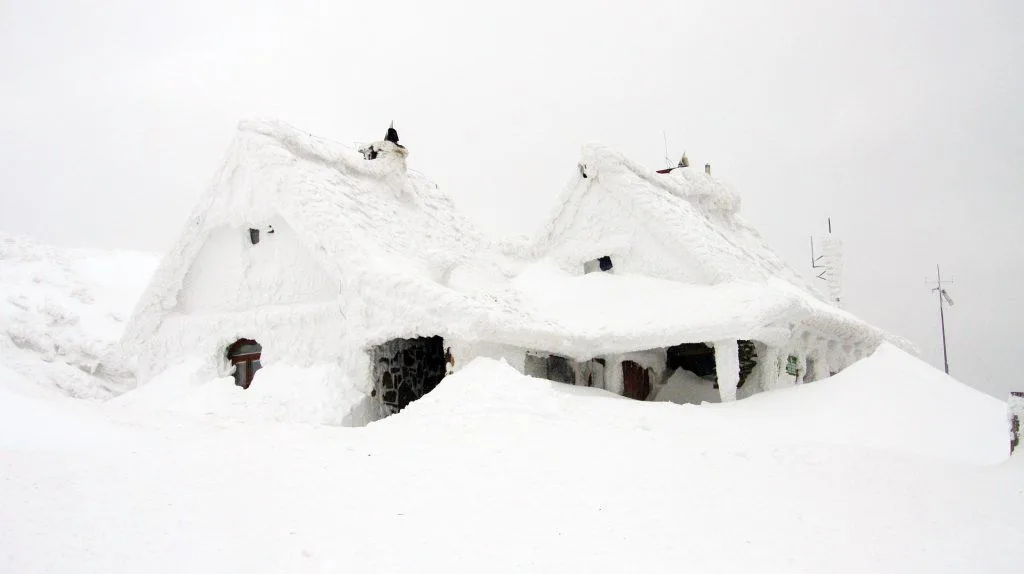
A blizzard can dump snow so hard and fast that you can soon find your home covered in a giant blanket of white hanging over your house.
You worry about whether or not your home can support this much weight. So you decide to climb onto the roof with the shovel and start pushing some of it off.
Don’t get me wrong: blizzards are a winter wonderland, all right. But they’re also a potentially dangerous disaster that can disrupt lives and wreak havoc on a home. Preparing your home inside and out is the best protection.
Pro tip: Prepare your home for climate change.
Ways to Protect Your Home in Case of a Snowstorm
- Keep the house warm using a generator or other alternative heat source, such as a wood stove. Normally, there are two to choose from: the standby generator that’s permanently installed outside your home, and a portable generator.
- Seal doors and windows to hold in heat.
- Inspect fireplaces, and chimneys before using, and have them cleaned if needed.
- Cover or remove any window air conditioners.
- Don’t forget to check the pipes to your washing machine in the laundry room.
- Digital readout helps manage oil changes and...
- Features electric start, low-oil shutdown, an...
- CARB and EPA III meet requirements for sale in all...
2. Cloudburst (Hurricane Season)
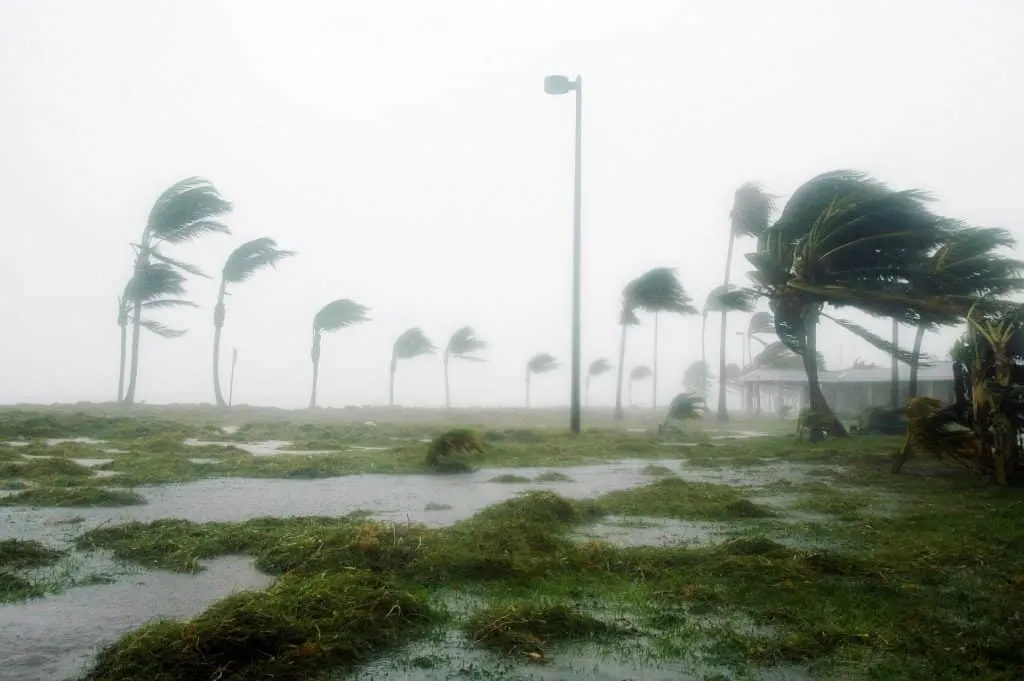
Everyone needs to be prepared for the unexpected. Hurricanes, for example, are strong storms that cause life and property-threatening hazards such as flooding, storm surge, high winds, and even tornadoes.
To put it another way, hurricanes are storm systems with circulating air and sustained wind speeds of 74 miles per hour or higher according to the Red Cross. The strongest hurricanes can have wind speeds exceeding 155 miles per hour. Preparation is the best protection against the dangers of a hurricane.
How to stay safe during a hurricane
- Avoid letting your guard down or taking things too leniently. With that being said, strap down the roof using hurricane straps or clips to fasten your home’s roof.
- Make sure carports, porches, and decks, and sheds are sound and firmly attached.
- Tie down small trees and shrubs. This helps prevent things like uprooting.
- Hire an arborist. Getting a professional opinion to assess the health of trees near you is never a bad idea.
- Amazon Kindle Edition
- Nowka, James D. (Author)
- English (Publication Language)
3. Flash Flood
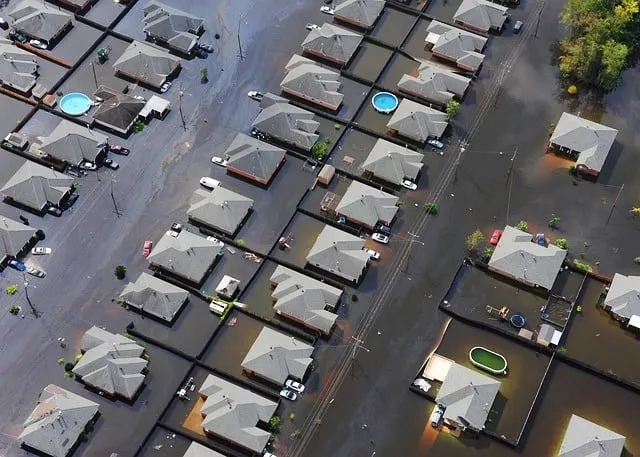
A flood is the overflowing of a large amount of water beyond its normal confines, especially over what is normally dry land.
A flash flood can strike anywhere and as the name implies, at any time. Floods are also the most common and most expensive natural disaster in the United States. That means that no state or territory is safe, according to FEMA.
It’s not a good idea to try and beat the odds, since only 20% of flood claims come from places where the flood risk is low. Instead, protect your home and your family.
Don’t Let Water Sneak up on You
- Stock up on sandbags. Consider purchasing flood boards and sandbags to block doorways with. These items will help protect your home from further damage.
- Keep yourself informed. Watch the weather forecast to make sure you’re up-to-date on any threats.
- In order to prevent water and sewage from backing up into your home, install one-way valves into draining pipes.
- Install water-resistant doors and window frames.
4. Shockwaves (Earthquakes)
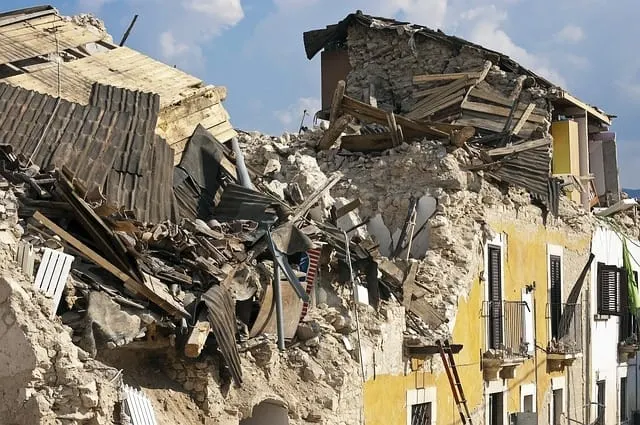
To begin with, an earthquake is what happens when two blocks of the earth suddenly slip past one another. The surface where these plates shift is called faults, or fault plane.
Earthquakes, also referred to as temblors, can be extremely destructive, and occur more often than we think.
Although they happen all over the world, they’re commonly known to appear throughout the western region of the U.S., called the “Ring of Fire” because of the volcanic activity near the area.
To no surprise, earthquakes are among the most deadly natural hazards simply because they can strike without warning much like flash floods.
Preventing damage to your home from earthquakes
- Add support to your foundation. Earthquakes have the ability to shift weak walls, so bracing them is always a good way to make the foundation stronger.
- Restrain large equipment such as furniture pieces, and appliances.
- Secure things like wall hangings, bookshelves, computers, and entertainment centers if you have them.
- Think about installing windows with round corners. Installing round corner windows can preserve the glass and potentially prevent it from shattering.
- Lastly, hold earthquake drills with your family members; drop, cover, and hold on to anchored objects!
Do’s & Don’ts For All Natural Disasters
| Do | Don’t |
|
|
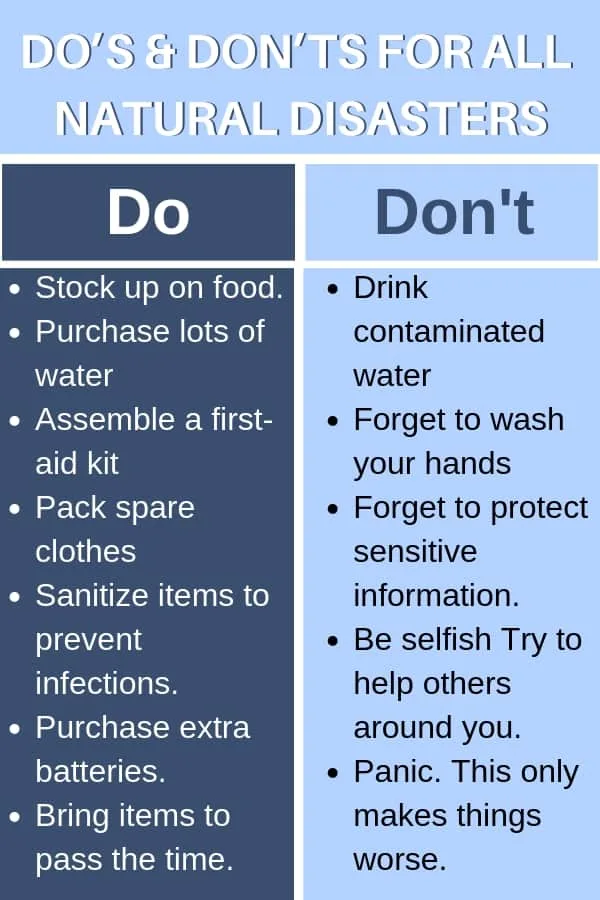
Generally speaking, the likelihood that your whole family will be in the same place at the same time during a natural disaster is slim.
With this in mind, make sure you and your family set a designated location to meet should a disaster strike near you and communication lines fail.
Stay safe!
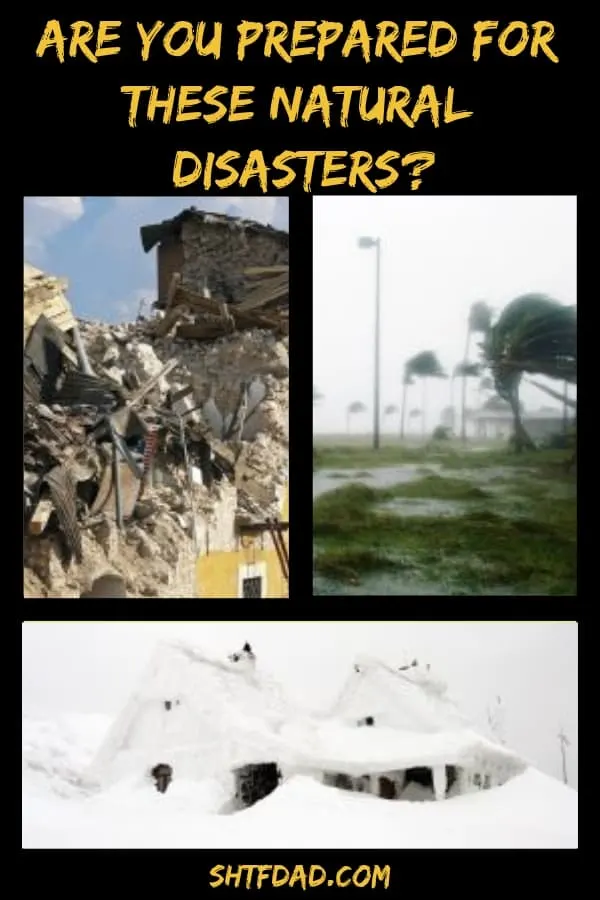
Resources:


